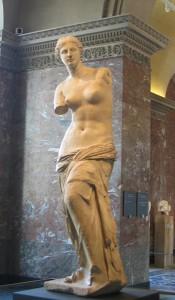Milos History
 The civilization of Milos is considered to be as ancient as that of Crete, and spans a period of at least 5,000 years. Its fame spread throughout the civilized world thanks to the masterpiece of the Aphrodite of Milos (Venus de Milo), a statue found buried on the island in the 19th century (1820) and is now in the Louvres Museum in Paris.
Around 5000 B.C., Flakopi, the oldest settlement on the island, was in existence between 4000 and 5000 B.C. The settlement was destroyed twice by invaders and was finally rebuilt in 800 BC in a different style. The ability to take advantage of the various mineral ores (zinc, tin, etc.) gave the inhabitants a plethora of tools having incredible precision for those years.
Flakopi's existence is situated between the Neolithic and iron ages, as many recent archaeological excavations have determined. The town was finally burnt down. The end of Flakopi came at around the same time as the Mycenaean civilization was flourishing elsewhere. It was around 1000 B.C. and, at that time, the Dorian invaders arrived on the island. In fact, Thoukidides reported in one of his books that it was for about 700 years that the Dorians made Milos their home. Milos became a center for artistic endeavor, as shown by the wonderful statue of Aphrodite of Milos, created around 400 B.C. |
|



